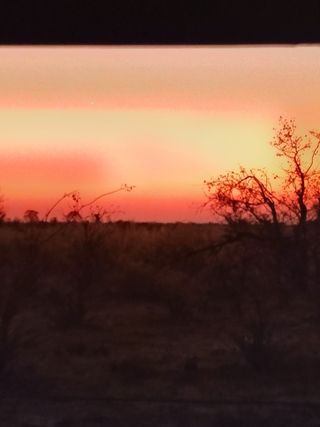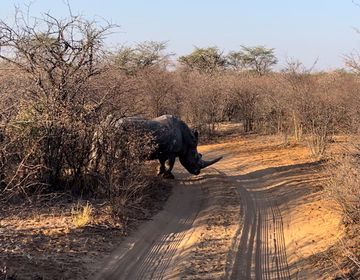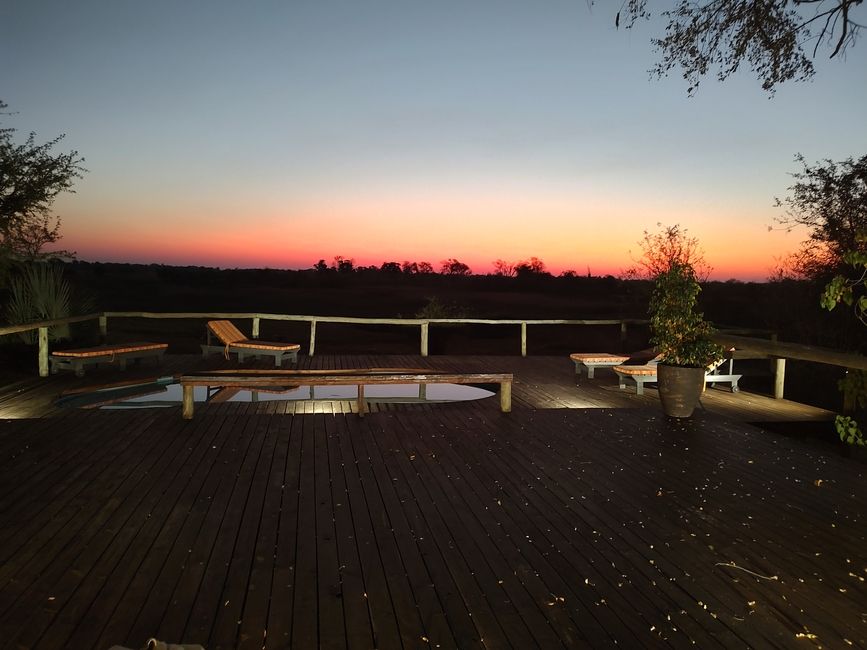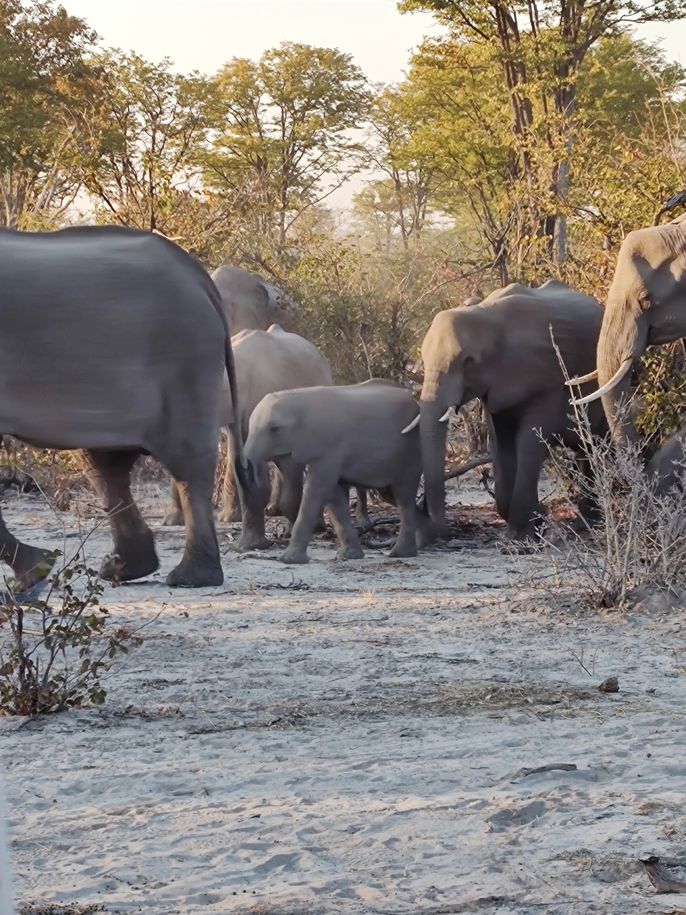A Baobab that rose from the Okavango Delta
There are some things that are iconic to the continent of Africa- the big five, delicious food and the majestic Baobab tree. The Baobab is known as the tree of life because it holds water in it's trunk and can survive the harshes of terrains. Personally, I see it as a connection to my past and a culture I long to know more about. For the Okavango Delta, the Baobab can be a refuge for animals, a source of food and water and is a true testament to perseverance.

The Okavango Delta spans over a vast area in the Northern end of the country. The Delta host some of the most iconic animals and views that Botswana and the continent have to offer. From Gaborone, we drove 11 hours to get to Xaoo Safari Camp where we stayed for 3 days. Xaoo means Buffalo in the San/Bushman language. The San or Bushman people were believed to be the first to settle in the area and the first to use the Mokoro boats and poles. On our 1st game drive at Xaoo, we saw a few animals but it was nothing compared to our 2nd day there. On Monday, we began our day at 4:30a in an attempt to see the illusive leopard at Moremi Game Reserve. Our tour guides reminded us that they are solitary animals but like to come out at dusk and dawn. Fun fact, Safari vehicles are cold at 4:30a! Our guides were amazing and packed us ponchos for the cold, windy, dust filed drive. While we did not see any leopards or big cats, were were lucky enough to get incredibly close to a breeding herd of elephants. The matriarch sniffed us out to make sure we were not a threat. After we were approved by her, she didn't mind if the young elephants came closer as well. This is also the morning we saw the giraffes basking in the sunrise. We saw all of this before we even reached Moremi Game Reserve. When we entered the reserve, our guides told us to be on the lookout for cats and dogs. While we were hoping to see big cats like lions and leopards we did get the change to see an African Wildcat hiding beneath the Baobab tree. We were also lucky enough to see an endangered pack of wild dogs taking a nap under a tree. This day we were on a game drive for around 12 hours.

During our next few days in the Delta, we were able to visit a cultural village where the students were able to interview community members for their final projects. The students tried local treats like Nik Naks, biscuits and even elephant. The students had a great conversation about the use of local materials and how to keep their livestock staff from live animals.

Our final highlight from the delta was Elephant Havens. This sanctuary is a home to orphaned elephants who need some help gaining their strength and confidence before being reintroduced into the wild. Our students learned about the elephants, their stories and even got to feed the elephants. We met a very sassy elephant named Misha who liked to try to find food in our pockets and used her trunk to steal food from her new siblings. The elephants are on a strict schedule and we had to leave because it was getting close to their bed time. Overall the delt was a beautiful experience.

The 5 days we spent in the north and 3 days we spent in the delta was our last big excursions before the trip ended. As each day passed, you could see the students getting closure, confronting past perceptions of the country and the continent and gain a new appreciation for the lessons learned on this trip. It will be hard to say goodbye to everyone as we have all created some beautiful bonds here. Like the Baobab, friendships and the spirit of botho will stay with us as we end one chapter and begin a new one.
Related Posts
Final Reflections and Advice for Future Students
It is our last day here in Botswana and before all the tears began, we asked students to share some of their final reflections and thoughts. Over the past three... keep reading

Khama Rhino Sanctuary
The first stop on our journey to the northern part of Botswana was the Khama Rhino Sanctuary; established in 1992, the sanctuary is a “community based wildlife project” aimed at... keep reading

Botho "people are people because of people"
Botswana culture is built on collaboration, community and consultations. Botswana prides itself for being a peaceful country and many say it's because of the spirit of Botho. Botho means people... keep reading





